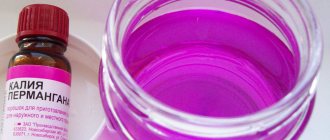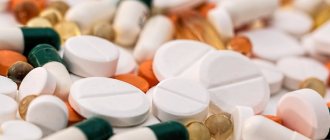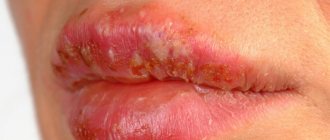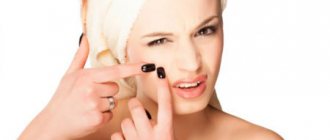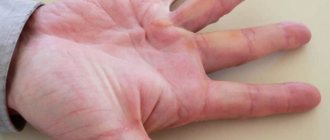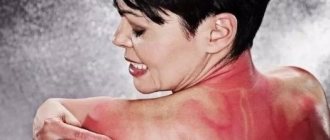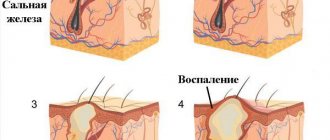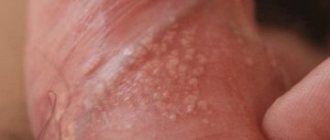Kinds
Taking into account the extent of the wound received, the victim must quickly receive qualified medical care and begin treatment. Burns are divided into subtypes: thermal (under the influence of boiling water, hot food, cigarettes), chemical, electrical, radiation. The first two are more common.
Thermal damage can be caused by close contact with: a hot object, the sun, boiling water, water vapor, electric current. It can be deep (affects muscles, subcutaneous skin structure, mucous membrane), superficial (the outer layer of the epithelium is injured), often accompanied by tissue necrosis and inflammatory processes. Signs appear after time.
Trauma of chemical origin occurs due to the contact of aggressive lips with chemical solutions (alkalis, ammonia, acids, alcohols). The longer the influence of hazardous substances on the mouth and lips continues, the more seriously and dangerously you can get burned. The level of damage is directly proportional to the duration of exposure and the concentration of chemicals. It is characterized by necrosis, bleeding of damaged areas, formation of crusts, wounds, and ulcers. It is possible to cure and eliminate the consequences by immediately contacting a doctor.
Sunburn
With prolonged exposure to the sun, in particular, in the wind, you can get a fairly severe burn to your lower or upper lip. Often, symptoms do not appear immediately, but after the cessation of exposure to sunlight. Characteristic signs of such a burn:
- burning;
- swelling;
- peeling;
- feeling of tightness of the skin of the lips.
Occasionally, even blisters may appear. But how to treat sunburned lips? First you need to apply a cloth soaked in water to them. Within a quarter of an hour, such a compress will reduce pain and swelling. However, it is forbidden to apply ice to your lips, as this will only make the situation worse. Next, you should apply ointment to the affected areas.
Features of treatment
A burn to the lip caused by boiling water, a hot metal object, or an alcohol-containing liquid requires first aid; begin treating the damaged area before blisters appear.
The acidic effect is neutralized by alkaline solutions and vice versa. Alkaline solutions are soap, soda and a weak solution of ammonia, and acidic solutions are a mixture of vinegar, water, and citric acid. As first aid for both types of damage at home, rinse the damaged area with cooled running water, neutralizing harmful poisons (consulting a dentist will help avoid undesirable consequences of the functionality of the oral cavity, gums, teeth, tongue). Washing with water is prohibited if a person is burned with quicklime; in this case, sugar essence (20%) is used as a lotion. The injured area is numbed with a compress of novocaine solution. Anti-inflammatory, antiseptic drugs, regenerating, softening ointments applied to the surface of the lips are effective. During the rehabilitation period, it is recommended to exclude from the diet pickles, smoked spices and spicy foods, which irritate the mucous membranes and slow down the recovery of organs.
In case of injury:
- Boiling water, high water temperature will cause signs of thermal damage, which can be cured by applying manganese lotions, generously lubricating with sour cream (a fatty fermented milk product), vegetable juice (using pumpkin, potatoes, carrots), egg yolk, sea buckthorn oil, compresses from freshly brewed tea bags, pulp aloe. When watery blisters form, it is important to use disinfecting anti-burn sprays. Intense blisters should not be opened independently, only using a surgical method that excludes infection. Serious injuries - 2-3 degrees require medical intervention.
- Chemicals, try to thoroughly rinse the area with water, neutralizers, and take painkillers to block the pain. A novocaine, analgin bandage applied to the oral cavity will relieve pain until the victim gets to a medical facility.
How to quickly cure a burn on your lip
The lips are skin-muscular folds, the structure of which is divided into three parts - cutaneous, intermediate and mucous. The pink areas, the so-called vermilion border of the lips, are covered with a transparent stratum corneum, which is exposed to high temperatures, chemicals, and ultraviolet radiation. They contain 100 times more nerve fibers than the fingertips. Therefore, a lip burn is always accompanied by burning, acute pain and itching. The injury causes severe discomfort and makes eating difficult. Delayed or incorrect treatment leads to infectious inflammation.
Care and recovery
Pharmacy products can relieve pain, preventing infection from entering wounds. Taking into account the degree of tissue damage, the doctor prescribes medicine. If this is the first stage, then drugs based on arnica and aconite are prescribed. Aconite is a poisonous plant, so the dose is determined by the attending physician. The drug has anti-inflammatory, antipyretic properties, but has contraindications for an allergic reaction, intolerance by the patient, and lowering blood pressure. Pregnant women should consult a gynecologist. It is found in the form of tinctures and granules. Arnica – relieves pain, blocks the inflammatory process. Available in granular form, ointment.
In the second and third stages, Cantharis, Urtica Urens, and Sulfuricum acidum are prescribed, which neutralize the effects of poisons and chemicals. “Kantraris”, “Urtica Urins”, when applied pointwise, cause burning and itching of the skin, which is not a deviation.
Symptoms of a burn on the lip
Signs of injury depend on the severity and the substance that caused the burn. The following stages and symptoms are distinguished:
- in mild cases, victims complain of a burning sensation and peeling. The lips swell and take on a reddish tint. Sometimes small blisters appear, but deep tissues are not damaged;
- the average degree is characterized by the occurrence of severe edema. The bubbles become larger, filled with cloudy contents, and severe pain is noted;
- in severe cases, the damage affects not only the upper tissues, but also the deep layers of the skin, muscles, and fat layer. The blisters fill with pus, and charred areas of the skin are visualized.
When chemical damage occurs, bleeding occurs and tissues die. With prolonged exposure to the sun, symptoms do not appear immediately, but after several hours. There is a feeling of tightness and burning.
Possible deviations and prevention of occurrence
A burn is a life-threatening injury, but it can cause discomfort and sometimes lifelong scars. The hand of a skilled plastic surgeon can correct this and give the face aesthetic beauty.
Paying attention to your own health helps you avoid traumatic situations.
If there is a child in the house, watch out for caustic substances, tightly close all jars and tubes, avoiding spills and leaks, keep away from children. Do not open dangerous drugs with your teeth. The first aid kit should contain “Panthenol”, “Rescuer”, which can help in providing first aid in many situations: they will relieve pain and prevent inflammation. Sunbathe carefully, use high-quality protective equipment. The article has been verified by the editors
Degree of damage to skin and mucous membranes
Clinical manifestations of burns and methods of their treatment depend on the depth of tissue damage.
It is very important not to apply oily products to such burns, since oils only promote the proliferation of pathogenic microorganisms.
Each degree corresponds to specific symptoms that determine the severity of the damage:
- First. The cells of the outer layer of skin and mucous epithelium on the inner surface of the lips are destroyed. It manifests itself as moderate swelling, redness, pain or burning. A mild burn can be treated for no more than 3-5 days with regenerating and antiseptic agents.
- Second. All layers of the skin are damaged up to the basement membrane, which is adjacent to the dermis. The second degree is accompanied by swelling, redness, and blisters. Symptoms disappear within 10-14 days with adequate treatment.
- Third. The epidermis, superficial or even all layers of the dermis are destroyed. The damaged area turns bright red and blisters form on it. Due to the burn of sensory receptors, painful sensations are dulled.
- Fourth. Cells of all layers of the skin die, down to the subcutaneous layer, which consists of adipose and connective tissue. The muscles and bones of the lower or upper jaw are damaged.
With deep injuries, the mucous membrane swells and turns outward. Because of this, the red border of the lips visually resembles the mouth of a fish.
First aid and further treatment
A lip burn is a condition that requires immediate first aid. The approach to first aid is individual, depending on the factors under the influence of which the burn occurred.
Usually, to clarify the diagnosis, it is enough to collect an anamnesis and conduct an examination. In cases where a child has been injured, diagnosis is somewhat difficult. Despite this, the first priority in providing first aid is to thoroughly rinse the affected area under running water for 15-20 minutes. If it is known that the cause of the injury was quicklime, then it is more advisable to wash the burn site with a twenty percent sugar solution.
In the case of a chemical burn, the next step is neutralization - the effect of an acidic environment on an alkaline burn, and vice versa.
The final first aid item is pain relief for the burn (lotions with a solution of novocaine, analgin).
Further treatment is carried out depending on the degree of damage:
- For thermal and chemical burns of the first degree, applications of chamomile decoction and the use of healing ointment are recommended.
- Second degree damage requires medical intervention when blisters appear, the opening of which takes place in the presence of a doctor. Antiseptics and wound healing ointments are prescribed.
- Third degree damage is treated in a hospital setting under the supervision of medical personnel. Painkillers, anti-inflammatory, antiseptic and healing drugs are used.
Increased attention and accuracy when working with chemicals (during their storage), with high temperatures, as well as knowledge and ability to provide first aid will help you avoid burn injury yourself and protect your children.
How to quickly cure thermal and chemical burns of the lip.
The skin on the face is more often exposed to external environmental forces. Aggressive chemicals and thermal irritants cause a burn on the lip. Such a domestic injury requires immediate first aid and treatment.
First aid
In order to avoid infection in the wound or subsequent complications, it is necessary to correctly provide first aid to the victim. The procedure is described in 4 main stages.
- Washing the wound. Remove clothing from the damaged area and place under running water for 15 minutes. Otherwise, at least cool with ice, a cold compress, or a hypothermic pack. This way the wound will stop getting deeper.
- Apply an antiseptic solution. If ash gets in, wash the area with furatsilin or hydrogen peroxide. Also, as a last resort, a weak concentrate of potassium permanganate or a solution of chlorhexidine 0.5% is suitable.
- Apply burn remedies. This is done after the antiseptic solution has dried. Apply to the reddened area around. A spray or ointment like “Liviana”, “Vinizol” or “Panthenol” is suitable.
- Apply a bandage. It is necessary when blisters appear around the wound. The bandage must be sterile, and an antiseptic ointment such as Miramistin, Betadine or Boro Plus must be pre-applied underneath it.
What is strictly forbidden to do if you are burned by a cigarette?
A cigarette burn cannot be treated with vodka, alcohol or cologne. These aggressive substances tend to cauterize tissue and increase the severity of damage.
It is also not advisable to use iodine and brilliant green, since they will increase inflammation, but you can use these agents to treat the area around the burn to reduce the likelihood of infection. Do not pop blisters or remove scabs from the wound. This way you break the natural barrier that prevents germs from entering.
If you have a cigarette burn, do not use iodine.
When making a cold compress, do not apply pure ice to the wound, otherwise frostbite will be added to the thermal burn. Do not lubricate the burn with greasy products. This will only make the situation worse and will not allow the wound to heal properly.
If possible, do not cover the damaged area with a bandage, allowing the wound to breathe. The only exceptions are those situations when the burn is located at the site of friction of clothing or at the site of direct contact with water, dust or chemicals.
Chemical
Chemical burns can occur from contact with irritating substances, which include:
- iodine;
- lime;
- ammonia or medical alcohol;
- concentrated soda solution;
- battery electrolytes;
- aggressive detergents, etc.
The degree of damage to the skin and mucous membranes of the lips depends on three factors:
- reagent concentration;
- duration of contact with the chemical;
- presence of cracks on the lips.
In 84% of cases, chemical burns are accompanied by death of the affected tissue. When acids come into contact with the skin, dark brown scabs form. But the greatest danger comes from burns from alkalis. They penetrate deep into the skin and fatty tissue, causing 3rd degree burns.
The danger of chemical injuries lies in the toxic effects of certain substances. The penetration of some of them into the blood leads to poisoning of the body, as evidenced by:
- diarrhea;
- dizziness;
- weakness in the body;
- pale skin;
- excessive sweating, etc.
Failure to provide assistance in a timely manner leads to even greater damage to the lips, oral mucosa, esophagus, etc.
Radiation burns are often a consequence of radiation therapy in the treatment of malignant tumors in the maxillofacial area. Ionizing radiation spreads to healthy areas of the mucous membrane and skin. The following symptoms indicate radiation injury:
Over time, the affected areas of the mucous membrane become cloudy and lose their natural shine. As the radiation dose increases, a sticky coating forms, which indicates tissue necrosis. Damage to the salivary glands leads to excessive salivation. Over time, it gives way to dryness.
How to treat thermal burning?
This type of damage is the most common. A common problem is lip burns from boiling water. If this happens, first aid must be provided. The healing process depends on the severity of the injury.
For a minor burn, follow these steps:
- Rinse the injury with cool water. This will relieve swelling, inflammation and pain.
- Apply manganese applications to the surface.
- Lubricate the wounds with carrot or potato juice.
- Freshly brewed tea bags help relieve swelling.
- Lubricate your lips with cream, ointment or sea buckthorn oil.
How to treat a moderate lip burn? You should apply the above steps, except for applying appliqués to your lips. Then it is recommended to seek help from a doctor. Sometimes surgical opening of the blisters is required.
If there is a third degree burn, you should immediately consult a doctor. Only he can minimize the consequences of injury and relieve pain.
